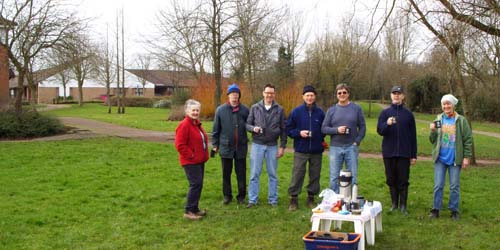Two Mile Ash Open Gardens 2013: a pictorial record
Click on the first slide for a larger picture and then use the forwards and backwards controls (bottom left and right), to navigate through the slide set.
The Park Gateway Project, a ‘litter walk’ and wild flowers – three stories from TMAEG
As spring has moved to summer, the Two Mile Ash Environmental Group has continued its work on priority areas within our community. The stories that follow bring together various strands of our environmental work – action in our village centre through the Park Gateway Project, the targeting of litter, and boosting local biodiversity through the planting of native wildflowers.
The Park Gateway Project is about the enhancement of ‘the public realm’ along the pedestrian corridor that links the village centre to the Local Park (the ‘little street’ framed by Hair Culture and the dental practice). It is about spreading the benefits of the successful works in the village centre to this entrance to the park, in time for the Party in the Park on July 6th.
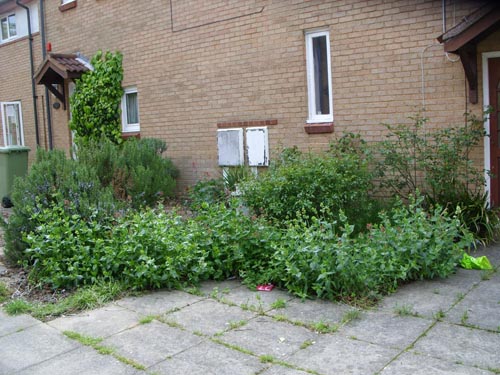
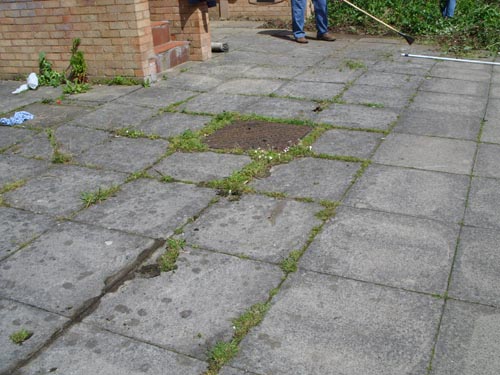
The project involved negotiations with the two businesses, with residential owners and with Milton Keynes Council, and led up to an enhancement scheme that took place on Saturday 1 June. Within an intensive three hour period, TMAEG volunteers cleaned up the paved areas, removing weeds and litter, and they also tidied up several front gardens and planting beds.
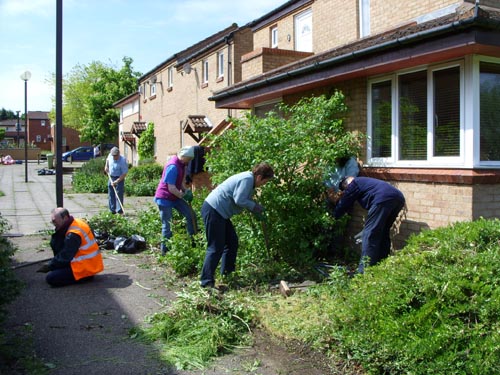
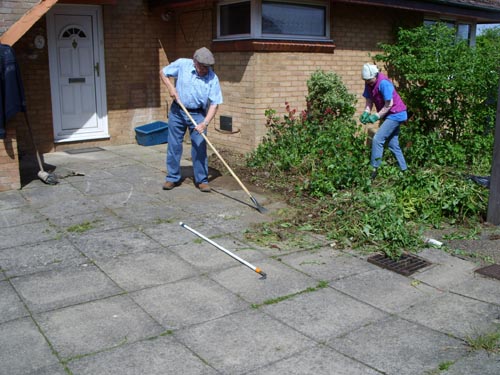
We have sought to be a ‘catalyst’ for improvement and already there are encouraging signs of action (or plans for action) by the two businesses and some of the householders. Thus, plant tubs have appeared, bark chippings have been laid down by one owner and both businesses intend to display colourful plants on the fronts of their buildings. And we are hopeful that agreement will be reached between the Parish Council and the businesses that will result in the placing of two large planters on the slabbed areas.
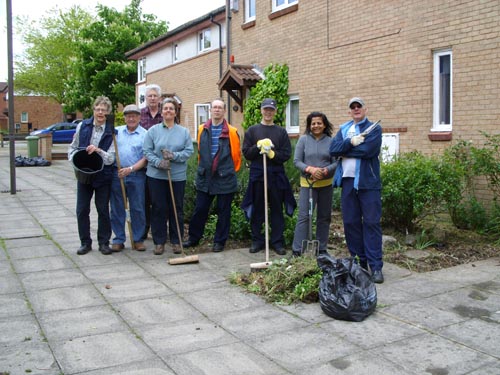

The Litter Walk involved TMAEG teaming up with Milton Keynes Council and the Neighbourhood Action Group to do a clean up of one of our green corridors, the Ash Brook. Council staff and volunteers formed two groups to litter pick along the stream, working from the High Street and from Downlands, meeting in the middle. In just two hours we collected many bags of litter.
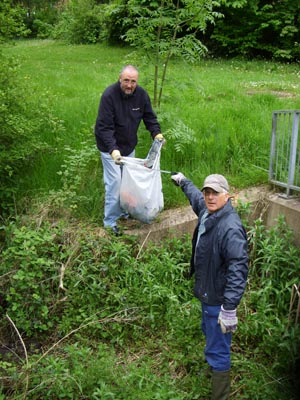
Our new volunteer, Smita, made the following comments:
I was apprehensive about meeting the group because I had not taken part in any activity as yet and did not know what sort of people were in the group. Meeting all of you took that away because you were welcoming and, like me, you seemed to want to do something rather than just talk !
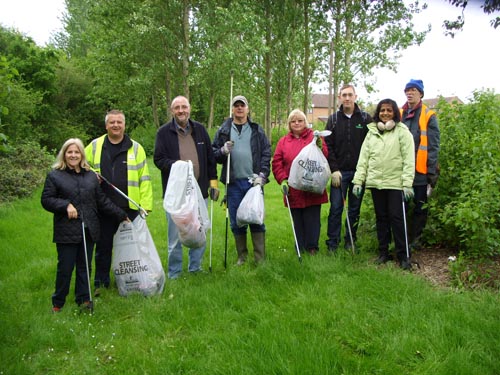
The single most invigorating thing was to have been informed that we have ancient woodland and a real brook –Ash Brook ! I bet most people don’t know this.
Over the years we have considered moving to a village because we like ‘ancient’ and streams etc but the comforts of city/town life (like ‘Just Eat’ and work) and the traffic jams coming into Milton Keynes deterred us.
Now having Ash Brook and the woodland means we can have it all here…almost !
Our third story is about ecology and wildflower planting in Two Mile Ash. Here we have several schemes in the making:

In May 2012, we planted plug plants on the ‘far’ side of the Stone Hill pond and already red campion is flourishing. Thanks to Margaret Parrott, there are also some wild primroses there.
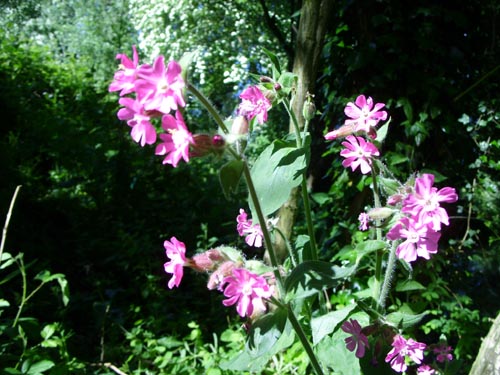
Some primroses that were growing in the old herb garden at Bradwell Abbey were gifted to TMAEG and these have been established along the Ash Brook – along the slope visible from the High Street redway. Watch out for them next spring.
Glades have been opened up along the Ash Brook and our volunteers have sown wildflower seeds – a ‘hedgerow mix’ for glades on the sunny side and a ‘woodland mix’ for the shadier glades.
There has been a bonus: by opening up these areas we have revealed plants formerly buried and suppressed by brambles. For example, bluebells are now flourishing in one of the new glades within the High Street to Stone Hill section of the Ash Brook.

Were they originally planted by the development corporation? Perhaps one of our readers will know? These appear to be of the Spanish rather than the English variety (Hyacynthoides nonscripta) which a number of us have been seeking to establish over the winter in ‘home gardens’. This autumn, we expect to plant them out in small ‘colonies’.
One of the advantages of TMAEG having links with The Conservation Volunteers is that we get to meet and work with other like-minded groups around Milton Keynes. The Friends of Hanson Environmental Study Centre (MK) is a group of volunteers (permit holders) who wish to protect the wildlife and environment of the nature reserve at Great Linford. They carry out regular practical conservation tasks, and enjoy bird and wildlife watching, photography and nature in the unique environment that the centre provides.
Via our Green Gym contacts with the chairman of the FoHESC, Tony Bedford, we were able to arrange for a small group to visit the centre (which is not generally open to the public) on 13 April for a guided visit. After and introductory briefing over coffee in the centre building, Tony led us around the extensive site, including the opportunity to use the various “hides” in order to view the wildlife.

The two hour tour passed very quickly with so much to see. We have been promised (“as you behaved yourselves”) that a second visit will be possible later in the year. I suspect that the demand for places will be very sought after.
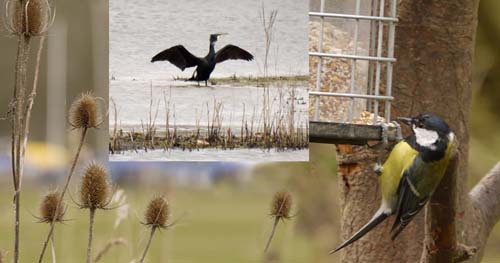
Dave
The group of 12 TMAEG members who gathered at the Recycling Facility at Old Wolverton on the evening of 6 March were directed to an upstairs lecture room where, with other visitors, we met Sarah Spicer, the Educational Officer of the MRF, who gave us an introductory presentation.
We learned that Milton Keynes is in the top league of Local Authorities when it comes to recovering recyclable materials from our waste. At present 56% of what households, businesses, schools etc. leave out for collection is in the pink sacks. However, the aim is 95% by 2016. By then, the planned AmeyCespa waste facilty, which will stand adjacent to the MRF, will be capable of extracting recyclable materials from remaining black sack waste, converting organic material to compost and utilising the methane produced as a fuel to create electricity.
We also learned that glass put out for collection (in blue boxes) must only consist of food jars and bottles – NO tableware, window glass or lightbulbs should be recycled, as, when processed, those glass types do not melt at the same temperature and the whole batch is considered ‘contaminated’. Wrap that glass safely and deposit in your black sack, or take large quantities to the Winterhill or New Bradwell Recycling Centre. Glass, incidentally, is stored and handled separately from the pink sack contents, which are separated mechanically and electronically, with a little sharp-eyed human intervention.
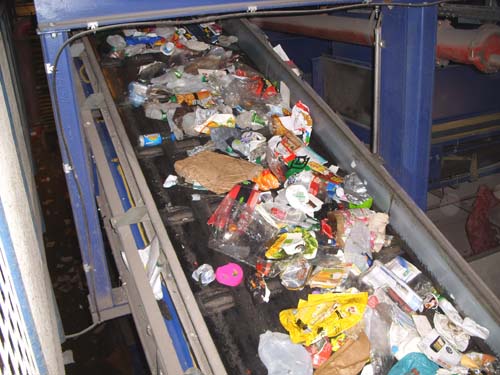
After the talk and a short film showing the conveyor- belt operations of the facility, we were equipped with ear muffs – to protect us from the noise generated by the machinery – and led to the viewing gallery that runs above the sorting floor. We saw the piles of materials released from the pink sacks and the rapid journey of each item as it was removed from the process to be deposited in its own hopper. As a hopper filled, the contents were compressed into a bale for transportation to the site where they would be recycled. Every day 300 bales are dispatched, 400 around Christmas. The whole cycle from floor to bale takes only minutes! Below are a couple of responses to the visit. Enjoy them and – if your curiosity is piqued – contact the MRF for its monthly open evening, or join us next year when we hope to repeat the visit.
Pavla Gossop
So there we were in Wolverton, re-cycling was the theme An evening with our rubbish, zero landfill is the dream Machinery can separate, conveyors going round The future’s looking bright, as new technology’s been found 55% recycled, Milton Keyens is at the top But we can do more to assist, our standards must not drop Our thanks to Jill and Sarah for their interesting talk Once we were full of info it was time for us to walk So go on to their website, even better book a tour Then you will get what we got, the incentive to do more !! Sorted (Kevin R)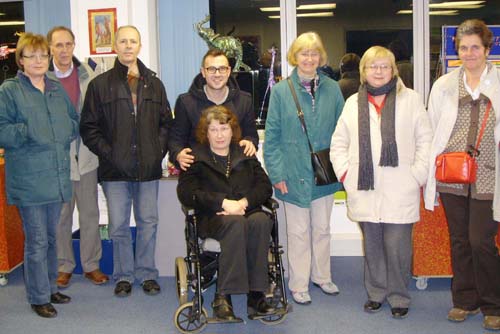
“. . Thanks for sending the photo showing TMAEG members attending the recycling area. We all look happy. The leaflets we collected there were interesting, important and very useful too. I have placed them on our notice board for future reference. I am very pleased that I went to the meeting and learned more information. Richard thought it was interesting too.”
Rosina
Your environmental group has just produced its first commercial product, an attractive coffee (or tea) mug featuring the Four Seasons design from our web pages. Final mug design is by TMAEG member Bill Forster, based on the initial work of Lucy Williams.
This limited edition souvenir costs just £5 per mug and can be delivered to homes in Two Mile Ash.
Orders to either Tom (01908 265201) or Chris (01908 561365)
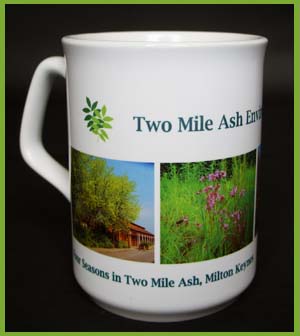
Let’s not exaggerate, the snow we experienced on February 23rd when we ‘overhauled’ the woodland path to the north of Milesmere was more a flurry than a prolonged heavy snow fall, but driven by that biting north east wind it certainly encouraged our volunteers to work energetically! We were revisiting the woodland which we first tackled in April 2012; the aim was to trim back the . encroaching brambles and other growth, and to give the path a fresh coating of wood chippings from a heap delivered to site by the Council.
It’s amazing how much a determined team can achieve in a morning. And more was done than originally planned, for the work included the laying and pegging in of some additional log edges at the entrance to the path. The ‘logistics’ proved interesting; delivering those chippings involved a procession of wheelbarrow loads to reach every section of the path, with the ‘guardian’ of the heap encouraging us to count each one out in spanish! The final count was something like treinta y ocho ……
Yet again our environmental work has inspired another fine contribution from our resident poet, Kevin; in fact, he has produced two – see below.
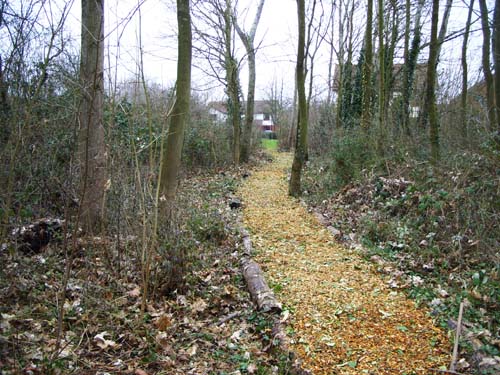

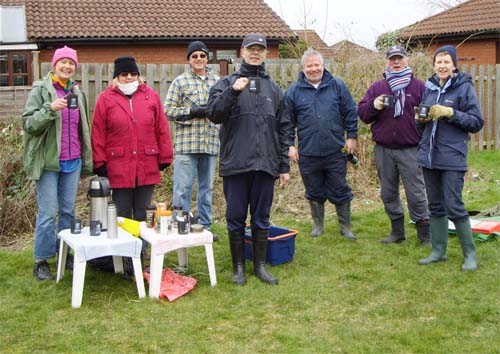
The Ash Brook
On the preceding Saturday we carried out our sixth session along the Ash Brook , taking us almost to the play area. Again, great fun, and we had the benefit of a gorgeous sunny morning. So we have been judiciously trimming back bramble tangles but leaving plenty of habitat for the birds and creating new glades where we hope shortly to sow wildflower seeds. And from the dead wood and other trimmings we created another ‘bug hotel’. As elsewhere along this wildlife corridor, the aim is to open up views of the stream and to improve local biodiversity -the range of birds, butterflies and other creatures, and the richness of plant life.
As before, our volunteers collected a mass of litter from the stream bed and its banks, enough to fill seven black sacks. This included some interesting bottles discarded by our thirsty drinkers (see picture) . As far as we can we will try to retrieve new litter as it emerges – as we did on the day – but the only long term answer seems to be through better education.
However, this should not detract from our major achievement. The feedback on the Stream Project has been very good, and clearly our volunteers have found the work very worthwhile. At least that is what they tell us….
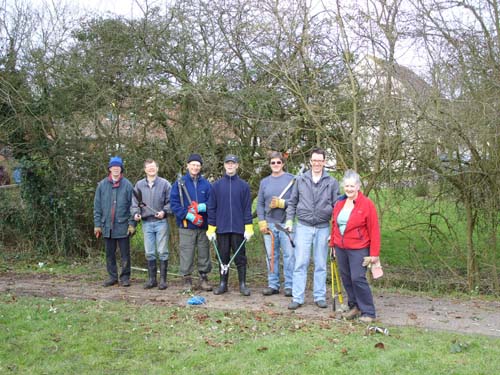
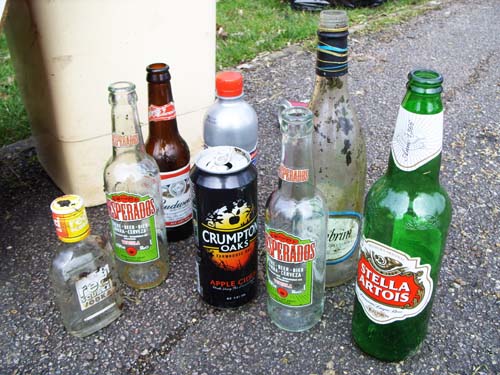
Reminder – Next Sessions for the Stream Project
These are on Saturday 16 March and Saturday 30 March. They each commence at 9.30 am with a briefing and warm up exercises. We have a mid morning coffee break and we aim to finish at 12 30 pm. Please wear old clothes and strong boots, wellingtons if you would like to work in the stream. Also you will need tough gardening gloves and while we can provide most of the tools that we’ll need, secateurs can also prove handy for some tasks.
Another important point. The work is at a range of levels. You don’t have to be either super fit or super strong to take part in our projects and there are many lighter tasks to do.
